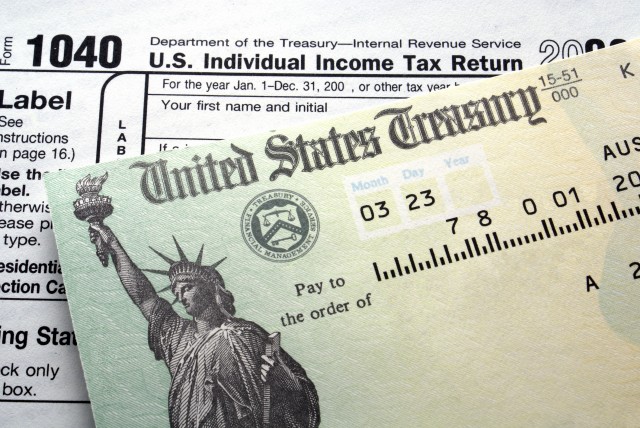She takes the example of Ray and Vicky. They're a fictional couple from an H&R Block flier. Together they earn $65,000 a year. Neither has health insurance.
"The biggest misconception I hear people say is, 'Oh, the penalty’s only $95, that’s easy,'" Smith says.
But a lot of people like Ray and Vicky could be in for a surprise this year, Smith says. For the fictional couple, their fine will be much more than $95. "In this situation, it’s almost $450."
That's because the penalty for being uninsured is $95 or 1 percent of income, whichever is greater. Next year, the fine goes up to $325 per person or 2 percent of income.
Smith says there's some relief for people who come in before Feb. 15. That's the deadline to enroll in a health plan through Covered California, the state's health insurance marketplace. "That's the smartest move," Smith says.
For those who come in by Feb. 15, they would still have to pay the penalty for having been uninsured in 2014, but would avoid the penalty for next year.
But a lot of folks won't file their taxes until April. For them, it will be too late to do anything about the penalty for being uninsured in 2015. They'll pay a penalty in their 2014 taxes and find out that they will have to pay an even greater penalty on their 2015 taxes.
"They're kind of stuck," says Mark Steber, the chief tax officer for Jackson Hewitt Tax Service. The company is running role-playing exercises with tax advisers to prepare them for delivering bad news -- in case taxpayers want to blame the messenger.
"Quite frankly, that’s a very difficult discussion," Steber says.
Steber says Jackson Hewitt has been trying to get the government to align the health insurance enrollment deadline with the tax deadline, so people filing their taxes after Feb. 15 won't be caught off guard.
Back at the H&R Block office, Sue Ellen Smith has another couple to review: Dan and Lucy. They did sign up for health insurance last year. They even got a subsidy to help them pay their premiums.
"They were entitled to a $1,500 subsidy," Smith says.
But then Lucy got a part-time job, raising the family's income and reducing the amount of subsidy for which they were eligible. That means they'll have to pay the subsidy back.
"So that would come out of any potential refund," Smith says. Or increase the amount of tax they pay, if they are not getting a refund.
On the other hand, for people whose incomes went down over the year, they could see their refunds go up.
Later this month, Covered California will send out 1095 forms -- a new tax form -- detailing how much subsidy each Covered California enrollee received. Employers and insurance companies will provide different versions of the 1095 form to employees and policyholders.
Covered California is expected to begin a major public information push around taxes starting mid-January. State of Health will continue to follow the issue of Obamacare and your taxes.
